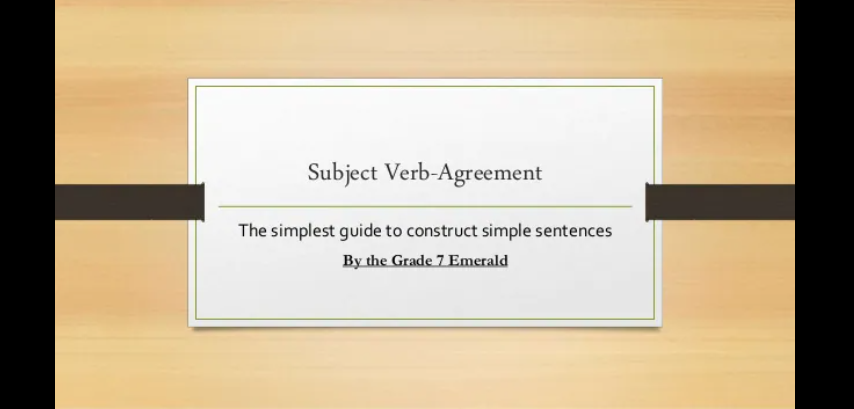What Subject-Verb Agreement actually is?
Subjects and verbs must have the same number (singular or plural). As a result, if the subject is singular, the verb must likewise be singular; if the subject is plural, the verb must also be numerous, we can also use subject-verb agreement checker tools.
Nouns and verbs produce plurals in different ways in the present tense:
Singular nouns are preceded by an s.
But
Verbs without an s in the singular form.
Subject-verb agreement appears to be simple, doesn’t it? A singular subject necessitates the use of a singular verb:
Every day, Bob takes his cycle to college.
A plural subject is paired with a plural verb
The young men are striving to scale the walls in the manner of caged animals.
However, The Copyeditor’s Handbook lists no fewer than 25 instances in which this is not the case, while Garner’s Modern American Usage devotes nearly five columns to the issue. Additionally, we may utilize subject-verb checking tools. Even Grammar Smart, a rather short book, spends five pages to the subject (complete with quizzes).
What is it about subject-verb agreement that makes it so difficult?
A lengthy, complex subject is one of the things that writers struggle with. The writer becomes absorbed in it and loses track of which noun is actually the subject phrase’s head. Alternatively, we may utilize subject-verb agreement checkers to ensure that the verb agrees with the adjacent noun:
The advent of new autumn clothes has piqued the interest of all back-to- college buyers.
The advent of new autumn clothes has piqued the interest of all back-to- college buyers.
(Agreement should be made before to arrival)
Another roadblock for authors is the trend away from rigorous grammatical agreement and toward “speculative agreement,” in which all the verb agrees with the notion or idea expressed by the subject, whether single or plural:
Wrong sentence according to the agreement: Twenty-five regulations are a large number to take in.
Right sentence according to the sentence: The notification contains a list of twenty-five regulations we can also use subject-verb checker tools.
Then there is the matter of English simply refusing to follow its own norms.
If English is capable of self-contradiction, it will do so.
The following is a concise list of 6 guidelines for subject-verb agreement.
- A subject composed of nouns connected by assumes a plural subject, only if the subject’s intended meaning is singular.
- Every day, he and I go for a run.
- My favorite sandwich is jam and peanut butter.
- (Singular sense meant)
- When a subject consists of nouns linked by or, the verb introduced with the final noun.
- Every day, he or I go for a run.
- Grilled chicken is delicious with potatoes, spaghetti, or rice.
- (Finishing noun: rice)
- Collective nouns (pair, staff, and so on) require a singular verb.
- The football team is trying to practice night and day in preparation for the Super Bowl.
- The Boston college committee is unable to agree on what to cut from either the college budget.
- Gathering noun phrases (plenty of, plenty of, lots of new, etc.) requires a single verb.
- A dinner party requires only a pair of 12 plates.
- “Each” requires a single verb.
- Each guy is looking forward to the competition and is well ready.
- 6. If the referent is singular, “None” allows a single verb; if the referent is plural, “None” permits several verbs.
- Without permission, no part of the book may be reproduced.
- Sean’s plate is completely devoid of peas. (The reference is “peas,” which is plural.)













